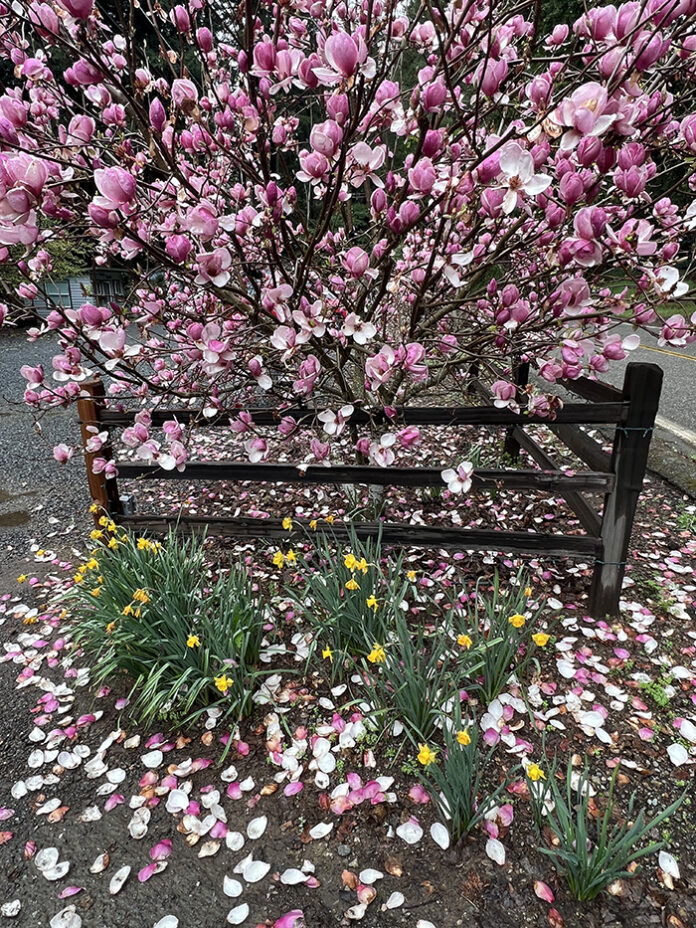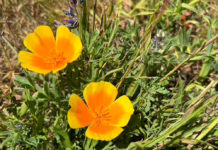Lots going on this week and last. St. Patrick’s Day last Friday, the first day of spring Monday and more rain—yeah, there’s that. Mother Earth drinking it in, replenishing underground water tables.
Rain can be good for farmers; however it can also be ruinous. During spring bloom, a hard rain—as Bob D. called it—can threaten almond, peach, apple and walnut crops. If blossoms are knocked down, bees cannot pollinate.
North of here, up Chico way, some five inches of hail reportedly damaged portions of Northern California’s almond crop during blossom. A farmer’s job is not easy.
The picture here shows daffodils (Narcissus pseudonarcissus) and a magnolia (Magnolia soulangeana), also known as Tulip, Saucer or Chinese magnolia. The tree showing brilliant pinks and whites, the daffodils flashes of green and yellow from below all shout: Spring!
Nonetheless, this magnolia looks a bit forlorn displaying its color through drizzly days of rain and cold. The daffodils look slightly less distressed. They are a bit more conditioned to harsh weather following crocuses’ multi-color stalks sometimes emerging from snow.
Fun facts: Spring is marked by the Vernal Equinox. This year, spring occured on March 20 at 2:24pm Pacific Daylight Time. Perhaps one remembers the first day of spring always being March 21? Correct, but dated. The last year spring occurred on March 21 was 2007.
Spring in the 22nd century occurs on March 20. That’s because each year the sun’s crossing of the celestial equator, when day and night are equal, occurs earlier and earlier due to the 400-year Gregorian calendar reckoning.
The word equinox stems from Latin: aequus (equal) and nox (night). Everywhere in the world, except the poles, the sun rises and sets due east and due west, on this day. The sun’s midday zenith is marked from vertical the same number of degrees as one’s observational latitude. Each week, the sun climbs four of its diameters in the Northern hemisphere. A higher sun creates warmer temps with less atmospheric obstruction.
Famous sites marking the equinox: Machu Picchu, Stonehenge, Chichen Itza, Karnak Temple, Mnajdra Temples of Malta and Angkor Wat.
Can’t end without a shout-out to Healdsburg’s own Kevin Croady’s revels during the city’s pre-dawn St. Patrick Day parade. Go Kevin! Go: shoplocalhealdsburg.com.









